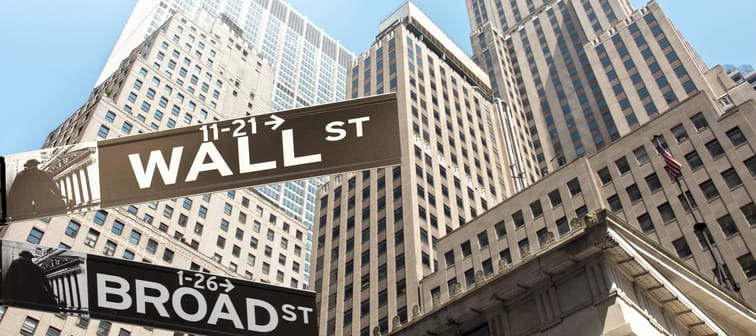How SPACs work
SPACs first started gaining traction among investors about 20 years ago, when they were known as “capital pool corporations.”
Despite the new moniker, SPACs and CPCs are essentially the same thing: a publicly-traded company whose sole purpose is to raise the funds it needs to merge with a private operating company, navigate the new entity through the IPO process and take it public.
When you invest in a SPAC, you’re not investing in a traditional company that produces goods or has a history you can track. You’re really buying shares in a concept: the kind of company the SPAC hopes to become. In that regard, it’s a highly speculative investment.
“Shareholders are basically betting on the credibility of the sponsor," Manoj Pundit, a securities partner at Borden Ladner Gervais LLP, said in a recent interview. "So if the sponsors make a poor choice, then of course the shares may go down in value."
A lot needs to go right for a SPAC to pop. The company targeted has to be worth taking public. The sponsors must have the know-how to get it over the finish line and be savvy enough to market it in a way that gets investors salivating.
But the uncertainty hasn’t stopped investors from putting their faith in SPACs in recent years.
In 2020, 254 SPAC filings raised $74 billion. They were set to have a monster 2021 — $102 billion poured into 298 filings in just the first quarter — but lost momentum when the U.S. Securities and Exchange Commission (SEC) laid out new accounting rules for SPACs in April 2021.
But even with a slowdown after the SEC changes, 2021 saw 613 SPAC listings that raised a total of $145 billion,according to NASDAQ
SPAC controversy
But all this investor interest isn’t without its own set of problems. Fraud was at the heart of a recent SPAC controversy in the U.S.
The SEC had questions about the legitimacy of the information being shared with investors in a SPAC launched by Stable Road Acquisition Corp., which planned to merge with space transportation company Momentus in 2020. After projecting a $1.5 billion valuation, Stable Road wound up tangling with the SEC and paying it a $10 million settlement.
Once the dust settled, the new entity was valued at around $875 million.
Those misses aren’t uncommon. An Intelligencer report about the SEC’s targeting of the sector found that “SPACs have created double-digit losses for most investors over time.”
Companies that took the SPAC route
The space remains intriguing, though. Online media giant BuzzFeed and social media app Nextdoor are both examples of companies that went public via SPAC in late 2021.
BuzzFeed’s stock ultimately closed down 11% after showing promise that morning on its first day of public trading.
Meanwhile Nextdoor shares surged 30% and were trading above $14 each on the day of its debut.
Electric vehicle producer Nikola, online real estate platform Opendoor and commercial spaceflight company Virgin Galactic all chose the SPAC route over the traditional IPO process, too.
More: 3 assets the 'SPAC King' Chamath Palihapitiya likes
Discover how a simple decision today could lead to an extra $1.3 million in retirement
Learn how you can set yourself up for a more prosperous future by exploring why so many people who work with financial advisors retire with more wealth.
Discover the full story and see how you could be on the path to an extra $1.3 million in retirement.
Read MoreDoes a SPAC benefit the businesses?
Rolling out an IPO can be a complex, monstrously expensive process that many companies don’t have the capacity or capital to undertake themselves. An IPO requires myriad underwriters, attorneys, accountants and tax professionals, each one receiving a cheque for their efforts.
There’s also the matter of raising enough investor capital to fund an IPO, a time- and energy-consuming process whose outcome is never guaranteed.
The SPAC’s managers provide the experience and multi-dimensional expertise needed to thread the business through the eye of the IPO needle.
“It's convenient for the company, it's a lot less risky and it's a lot less time consuming,” says Len Zapalowski, partner at Vancouver-based boutique investment bank Strategic Exits.
Leafly began trading on the Nasdaq in February under the ticker symbol LFLY following a SPAC merger with Merida Merger Corp.
Access to the public markets was “super critical” for the company, according to Leafly CEO Yoko Miyashita.
“You also really have to understand the difficulty of accessing capital and how the door closes and opens and closes. … For us, it was just that steady stream access to the U.S. public markets that opens up a whole new range of investors who can look at Leafly as an investment option,” she said in a recent interview with GeekWire.
Choosing a SPAC to invest in
Most SPACs tend to offer shares in the range of $10, which makes investing in them, and the companies they eventually become, a rather cheap bet.
The SPAC that acquired BuzzFeed, for example, 890 Fifth Avenue Partners, raised an initial $287 million in $10 increments in January. It’s fair to assume that the company’s eventual IPO, which is being valued at $1.5 billion, will cost investors significantly more than $10 a share.
Zapalowski says the highly granular information contained in a SPAC’s prospectus, part of the S-1 form that gets filed with the SEC, gives investors a relatively strong impression of the kind of company it will eventually try to take public.
“They get quite specific about what they want,” he says.
Even with detailed data at your disposal, choosing the right SPAC can be tough. You can evaluate a SPAC based on its management team’s track record, but putting your money in before knowing what company is going to be acquired is always going to be somewhat of a blind bid.
Diversify your portfolio by investing in art
When it comes to investing, a diversified portfolio can lead to better returns. Masterworks' art investing platform has turned a previously inaccessible asset class into an actual option for individual investors. Think of artists like Banksy, Monet or Warhol. Get priority access and skip the waitlist here.
Skip the waitlistTake your time
But you don’t need to dive headfirst into a SPAC the moment it starts attracting capital. Once it’s been launched, a SPAC has two years to find a company and acquire it. If it fails, investors get their money back.
“There's really no reason to get in at the beginning, unless you really like the management team,” says Zapalowski. “You can get in when they're running out of time, or when they make the partnership announcement.”
Early investors do, however, get access to contracts known as warrants, which give them the right to purchase a certain number of additional shares of common stock from the company at a certain price in the future.
Warrants are nifty sweeteners, but nothing about the SPAC process guarantees the successful performance of a new entity — or its stock. SPACs mitigate risk for companies, but not so much for investors.
More: 3 stocks that could survive a market apocalypse
This 2 minute move could knock $500/year off your car insurance in 2024
OfficialCarInsurance.com lets you compare quotes from trusted brands, such as Progressive, Allstate and GEICO to make sure you're getting the best deal.
You can switch to a more affordable auto insurance option in 2 minutes by providing some information about yourself and your vehicle and choosing from their tailor-made results. Find offers as low as $29 a month.









